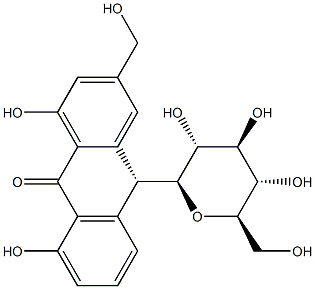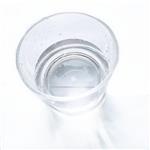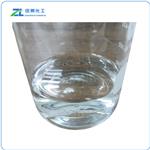Description
Aloin is the major anthraquinone glycoside obtained from the Aloe species[1]. It exhibits anti-inflammatory and anti-oxidative activities[2]. As a quality standard compound based on the Chinese Pharmacopoeia (CHP), it has a wide range of pharmacological activities, including anti-tumor, anti-inflammatory, anti-osteoporotic, organ-protective, anti-viral, anti-microbial, anti-parasitic, and laxative potentials[3]. Moreover, it regulates blood lipids and glucose and improves neuropathic pain effects, depicting the potential to be transformed into promising medicines and healthcare products.
Uses
Aloin is used as a stimulant-laxative, treating constipation by inducing bowel movements. The compound is present in what is commonly referred to as the aloe latex that exudes from cells adjacent to the vascular bundles, found under the rind of the leaf and in between it and the gel.
Purification Methods
Aloin forms the monohydrate as lemon yellow crystals on crystallisation from H2O (450g/1.5L) which has a lower m ~70-80o than the anhydrous substance. [Cahn & Simonsen J Chem Soc 2573 1932, Hay & Haynes J Chem Soc 3141 1956.]
References
[1] Lee L, et al. Inhibitory effects of aloin on TGFBIp-mediated septic responses. Journal of Asian Natural Products Research, 2020; 23: 189-203.
[2] Lee L, et al.Suppressive effects of aloin on polyphosphate-mediated vascular inflammatory responses. Journal of Asian Natural Products Research, 2020; 23: 89-99.
[3] Yang Y, et al.Can aloin develop to medicines or healthcare products?. Biomedicine Pharmacotherapy, 2022; 153: 113421.



